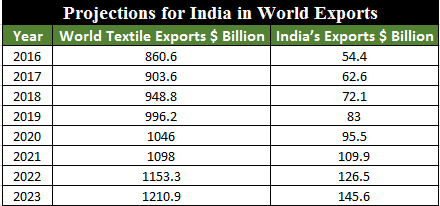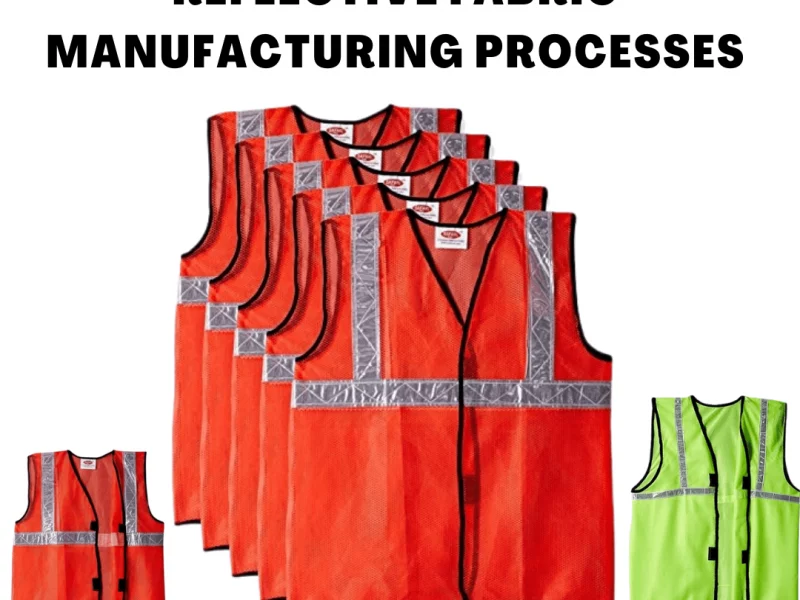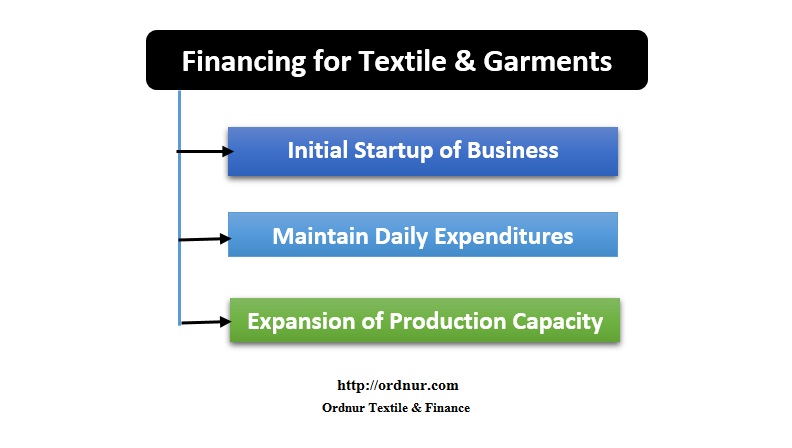Indian Textile Industry
The textile industry employs about 105 million people directly and indirectly. India’s overall textile exports during FY 2017-18 stood at US$ 37.74 billion. The Indian textiles industry is extremely varied, right from fiber to fashion. The Indian textile industry, currently estimated at around US$ 150 billion, is expected to reach US$ 230 billion by 2020. The Indian Textile Industry contributes approximately 2% to India’s Gross Domestic Product (GDP), 10% of manufacturing production, and 14% to the overall Index of Industrial Production (IIP). The industry (including dyed and printed) attracted Foreign Direct Investment (FDI) worth US$ 2.82 billion from April 2000 to December 2017. Indian Textile Industry is performing very well although there is huge competitiveness of the Indian Textile Industry.
Major Textile Brands
Projections for India in World Exports
The projected export values to the world by India showing that we will have positive growth in our export of garments. So this is a good sign for this industry.
Competitiveness of the Indian Textile Industry
Industry Competitiveness of the Indian Textile Industry is very high because, there is a high threat of substitutes, higher bargaining power of buyers, high competitive rivalry, and high threat of new entrants. All of these situations are creating a negative impact on the textile industry. The only positive things are there is the low bargaining power of suppliers.
Challenges for Indian Textile Industries
There are six major challenges for the Indian textile industry. To remain competitive industry will need to deal with these challenges.
- Goods and Service Tax
- Increase Labor Wages and Worker’s Salary
- Access to Latest Technology
- Fierce competition from China and Bangladesh
- Environmental Challenges
- Lack of Institutional Support
Opportunities for Indian Textile Industries
Technical Textile
The Technical Textile Industry in India has witnessed one of the fastest-growing rates in recent years and is expected to reach USD 32 billion by 2023, representing a CAGR of 9.6% during 2014-2023.
Apparel
The global apparel market size is expected to reach $2.6 trillion in 2025 growing by a projected rate of 4%. By 2025, India will be the second most attractive apparel market adding around $121 bn in the world.
Machine Manufacturing
According to the report of Textile Ministry of India till the year 2012-13, the production of textile machinery was Rs5280 Cr. Indian Market has a lot much potential to be in the machine manufacturing field and has a great future in it.
E-Commerce
The growth of Indian E-Commerce companies provides opportunities for the Indian textile industry in the domestic as well as international market. Amazon, Flipkart, Jabong, and Myntra are some of the examples of E-commerce.
How to Deal with Industry Competition
To deal with extensive industrial competition, the textile industry in India needs to focus on the following matters:
- Identify a need in the industry and satisfy it with a product or service
- Improve on existing products or services
- Focus on the needs of customers
- Do not underestimate competitors
- Good Marketing Strategies
- Good Industry working culture
Summary of Competitiveness of Indian Textile Industry
- Indian Textile Market has the great potential to grow in future
- Indian Textile Industry has great competition in Spinning, Weaving, and Processing Sectors.
- There is not much scope in Technical textiles, Machine Manufacturing, E-commerce, and Apparel sector
- To stand out unique in the textile market industries have to do something innovative than the current competitors.
- Before entering into a business one must do a market survey and take feedback from people, from the same he or she must make a conclusion to start the business.
- Industries must focus on their serviceability and must work according to the customer’s demand in the market.
- In order to be a good competitor industry must have a customer focus, good working culture, good promotion strategies with the following ways industries can make a good market as well as profit in the textile market.
Competitiveness of Indian Textile Industry pdf
Written by
Yash Sanjay Trivedi
VJTI, Mumbai, India
Email: [email protected]






